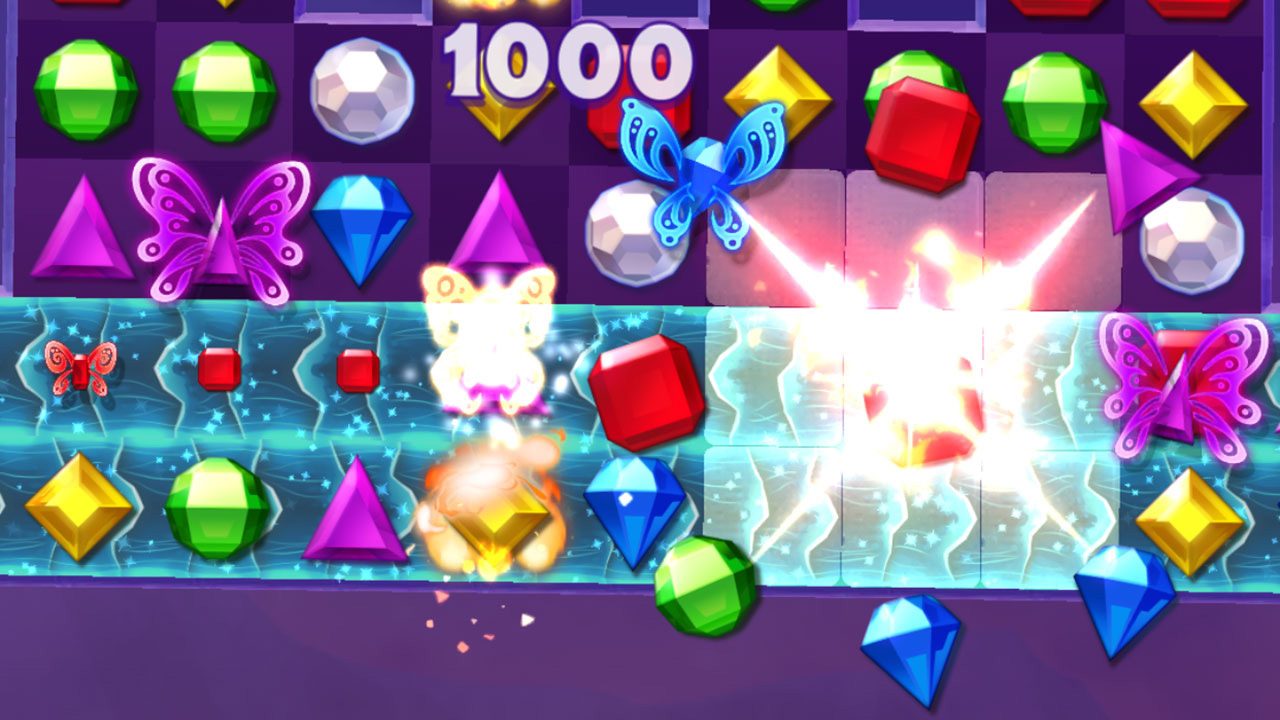Match-3 games are immensely popular right now, and that’s all thanks to Bejeweled, which originated the gameplay and helped make PopCap Games one of the most recognizable companies around. It has been six years since we last saw a new Bejeweled game, but PopCap is still wowing the mobile gaming world with the recent release of Bejeweled Stars. The game, available for iOS and Android, takes the classic match-3 gameplay and combines it with a number of new features for a fantastic and fun experience.
Heather Hazen, the game general manager for Bejeweled Stars, has been at PopCap for eight years and worked on various Bejeweled titles. She talks to [a]listdaily about bringing Bejeweled back, competing in a genre it created, and how PopCap excels in making games fans can connect to.
What inspired PopCap to make a new Bejeweled game?
The inspiration for Bejeweled Stars comes from our passion for the Bejeweled franchise, how we think of Bejeweled fans, and how match-3 has evolved over the six years since we last launched a Bejeweled title. It’s part of PopCap’s DNA, and there are a lot of people here—including myself—who have been thinking about how to bring Bejeweled to the next level. This game is a manifestation of all of those ideas.
 How is Bejeweled Stars different from previous games?
How is Bejeweled Stars different from previous games?
Essentially, Bejeweled Stars is a game about playing how you wish to play. We’ve taken the classic match-3 mechanic that we created with Bejeweled and maintained the quality that we’ve been known for. The matches feel good, there are lots of great visual effects, the audio is spectacular, and matches have the same gravity and weight that you expect. But we also wanted to evolve what it means to play match-3. So, in our game, you collect things called SkyGems, that you can use as ingredients to build power-ups—as opposed to having to pay for them.
Another way that we’re evolving the game is by changing the board, which is normally a pretty static piece, although there might be challenges like clearing a crystal or destroying a stone. We thought it would be awesome if the board were interactive. Now there are things called Currents, which are like rivers that run down the board, and the gems move down them to potentially create matches. We have Clouds, where you can pick up a section of the board and move it to another place. So, you might make matches without using a move, because you’re strategically placing gems into clouds and then moving them to match with gems on the other side.
The final innovation is about social connection. There are a lot of games out there where you just send a request for a heart or life, or you could send a note or gift, but there’s never any personal tie-in to that. So, it’s our expectation that people—we’re social creatures—like to have conversations about the experiences that we have. So we’ve created a system called Charms, which are basically Bejeweled Stars emoji, which you can use to express yourself. You might put some emoji together to tell stories about what you’re doing. You might display a rare emoji that you got because you completed an achievement. It gives a narrative to your game experience that’s more immersive than anything else we’ve seen in match-3.
Does Bejeweled Stars still have the quick gameplay previous games are famous for?
We are going for accessibility, for sure. How people fit this style of game into their lives is a completely personal choice. You might only have five minutes while waiting in the carpool line to pick up your kids. You could either play a quick game or create some power-ups to use for later. Later in the evening, you might have thirty minutes, so you might want to get more strategic and try out some of the things you’ve been thinking about during the course of the day.
The gameplay is the same match-3 that it has always been, and we’re hoping the new innovations will create an experience that will fit into your life no matter how much time you have.
Are there challenges to promoting a new game in the ever-crowded mobile market, even with a brand name as big as Bejeweled?
People have a lot of choices, that’s for sure, and it’s not just about games. If you think about what you have on your mobile device—and what you use it to do—you’re making a choice not only about which game to play, but whether or not you’re going to check your email. Or you might check the weather, read the news, or send a text message. It’s a crowded space for time in addition to being a crowded space for games.
What we want to do is make the experience accessible and easy enough to engage in so that—when you do have a few minutes between checking text messages and emails—you’ll quickly go in and send a quick note or emoji in Bejeweled Stars because you just have to tell someone about it.
It’s about creating more opportunities for people to engage whenever they might have time, and how it fits into the ritual of your life.
There are a great many match-3 games available now. How do you compete in a genre you originated?
I think one thing that’s super important is that we stay true to who we are. There are a ton of Bejeweled fans out there, so our first job is to make an experience that they love and recognize. Before we do anything else, we have to make sure we stay true to the core of who we are. After that, it’s a matter of taking a look at what is missing.
I’m a match-3 player, and I don’t have a social experience with any match-3 game that I’ve played. There’s nothing that I can say to my sister, who also plays match-3, about what I’m doing beyond taking a screenshot, sending a text message, or having a conversation. I think finding those areas that are underserved is what differentiates us.
You can also create your own power-ups, which is something no one else is doing. We’re relying on a strong crafting system, which we know works in other games, to give you a sense of autonomy and choice in how you proceed with your game experience. That’s something I can’t do in any other match-3 game. I would either have to have a power-up gifted to me, purchase them, or (if I’m lucky) earn them through something that I do. But I never have the opportunity to take a strategic view of how I’m going to create them for later use.
What do you think makes the Bejeweled brand such a timeless classic?
I think it comes back to quality. We spend so much time thinking about how players are going to experience what we’ve given them and the emotions it’s going to evoke. If you look at some the things we’ve put in the game, we have a choir that sings the word “meow” at the end of a level. It’s so awesome when you hear it, because it’s a whole choir singing meow, and it fits with our theme.
Then there are the incredible visual effects and how they appeal to me as a player. I have an amazing move, then suddenly everything explodes with fireworks going off, and I feel awesome about what just happened. Not only with Bejeweled, either. I think that’s something that PopCap is great at—thinking about that emotional connection to how you play games.

Have PopCap’s other hit games, like Peggle and Plants vs. Zombies, influenced how Bejeweled Stars was made?
Yes, in a variety of ways, but the most obvious is how we take midcore and hardcore mechanics, like tower defense or crafting, and figure out ways to make them accessible. Those types of constructs, like having a strong collection mechanic with the Charm system, are extremely motivational for players. Collection is also something that has driven game engagement for a very long time.
PopCap kind of has the “special sauce” around taking a mechanic that could be considered hardcore—or maybe not accessible or easy to understand for a casual audience—and turning it into something that feels really good. That helps drive the motivation to continue playing our games.

